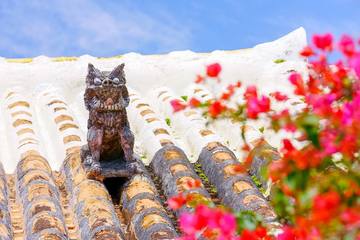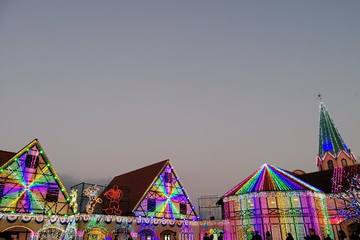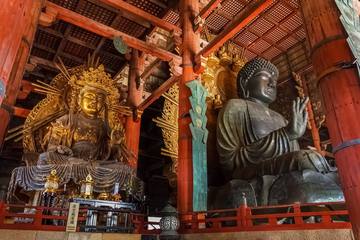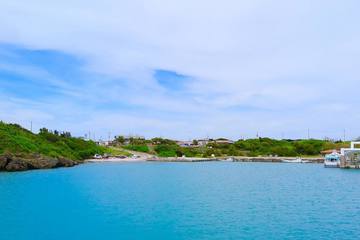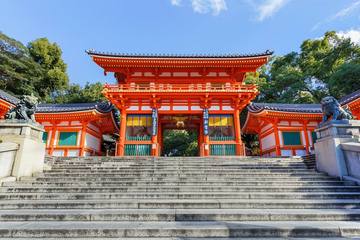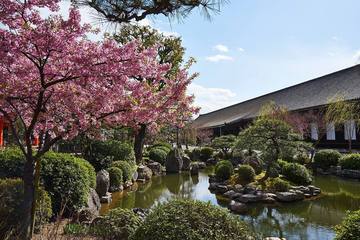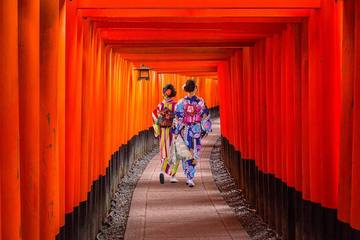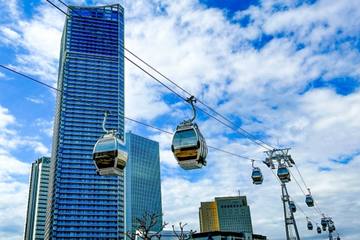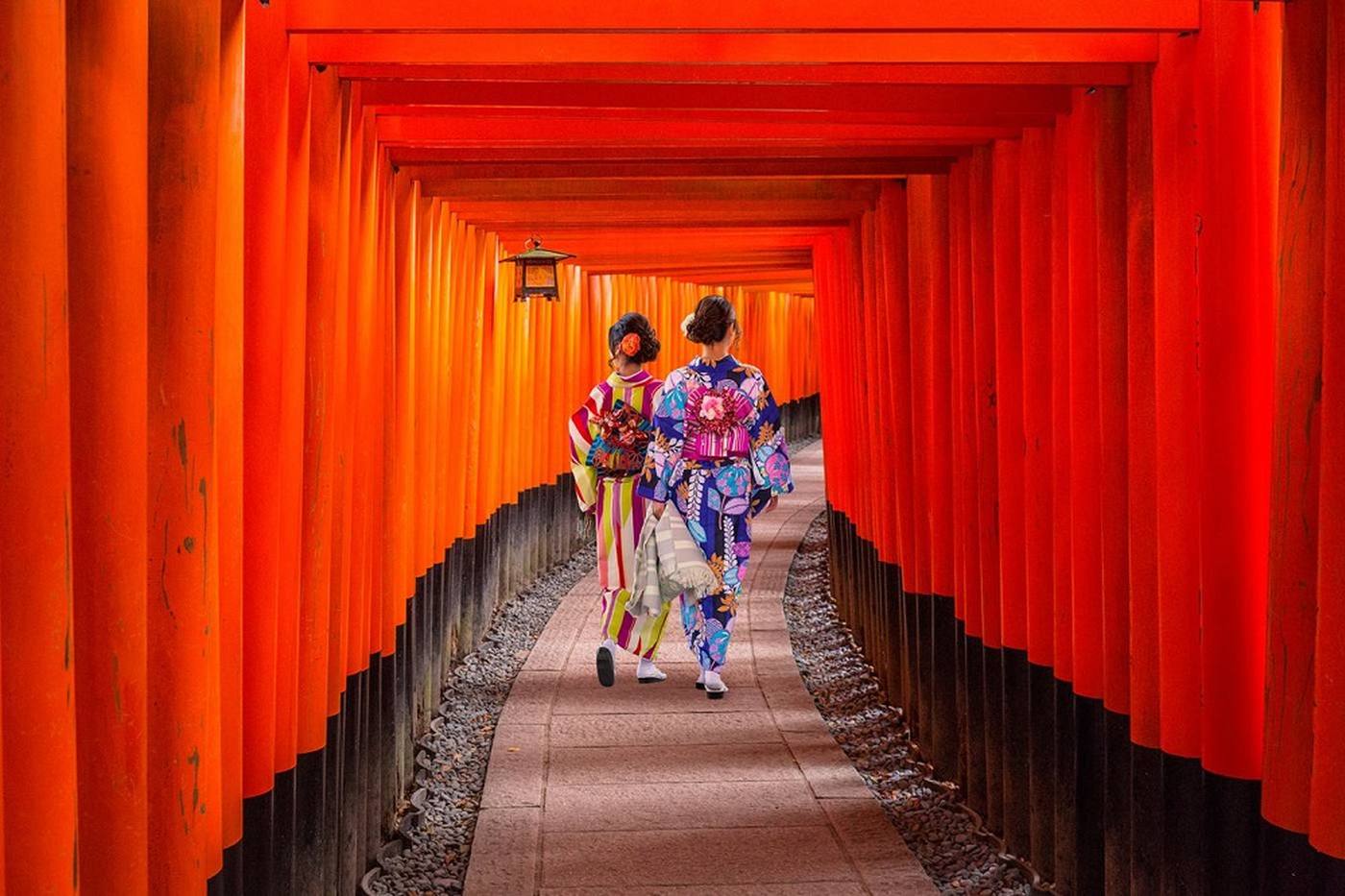
Kyoto's Premier Power Spot, Fushimi Inari Shrine: Essential History and Highlights Explained!
Fushimi Inari Shrine (pronounced: Fushimi Inari Taisha) is the main shrine of Inari, out of an estimated 30,000 'Inari shrines' nationwide, and is considered the head temple of Inari worship. Located on Inari Mountain in Fushimi, Kyoto, this shrine has long attracted devout believers.
The unending string of red torii gates creates a mysterious ambiance that captivates many, drawing tourists not just from Japan, but from around the world. This popular power spot, Fushimi Inari Shrine, and the tourist attractions around it are introduced here.
*This article is translated using ChatGPT.
For the latest information on each tourist spot and facility, we recommend checking the official website.
- 日本 、京都府
Basic Information on Fushimi Inari Shrine
Origin of the Name
The most famous theory on the origin of Fushimi Inari Shrine's name is that it comes from the description in the Yamashiro Province's Fudoki, meaning "rice has grown." While many people might associate the term 'Inari' with foxes, the deity worshipped here, Inari Okami, is not a fox. The divine messenger (a servant of the gods) of Inari Okami is a white fox, revered as a sacred animal along with Inari Okami, and the expressive fox statues scattered throughout the shrine are one of its charms.
History
The shrine was founded when Inari Okami was enshrined on Inari Mountain by Iroko Hata in 711 (Wado 4). From 827 (Tenncho 4), when Inari Okami was conferred the rank of Junior Fifth, it has been widely revered by the people of Kyoto. After three shrines were built by Fujiwara no Tokihiro in 908 (Engi 8), the shrine was elevated to the highest rank, "Sho-Ichi-I" in 942 (Tengyo 5).
Many of the shrine's buildings were destroyed in the Onin War which began in 1467 (Onin 1), but they were rebuilt, including the main shrine, in 1499 (Meio 8). In the modern era, the main shrine was designated a national important cultural property in 1909 (Meiji 42).
Access
Address: 68 Yabunouchi-cho, Fukakusa, Fushimi-ku, Kyoto City
■By Train
There are two nearest stations to Fushimi Inari Shrine: a JR line station and a Keihan Main Line station.
From Kyoto Station, it's a quick five-minute trip on the JR Nara Line to Inari Station, which is right near the shrine. If you're coming from the Sanjo or Osaka area, the Keihan Main Line's Fushimi Inari Station is convenient. From either station, it's about a five-minute walk to the shrine.
■By City Bus
If you're using the bus, take the South 5 line and get off at the "Inari Taisha-mae" stop. From the bus stop, it's about a seven-minute walk to the shrine.
■By Car
Parking
There is a free parking lot for shrine visitors on the grounds. However, as it can get very busy on weekends, it's recommended to use a nearby paid parking lot or public transportation.
Visiting Hours
The shrine grounds are open for worship 24 hours a day, and admission is free. However, if you wish to receive prayers or amulets, there are reception hours.
Prayer Hours: 8:30 - 16:30
Amulet Distribution: 7:00 - 18:00
Blessings
Fushimi Inari Shrine has long been venerated nationwide as a deity of abundant harvests, thriving business, household safety, and the fulfillment of all wishes. From the anecdote of Toyotomi Hideyoshi praying for his mother's recovery from illness, there is also the blessing of complete recovery from illness. You can also request prayers for specific wishes, such as childbirth or avoiding misfortune, by providing your address, business or company name, and personal name.
Recommended Sightseeing Spots & Route at Fushimi Inari Taisha
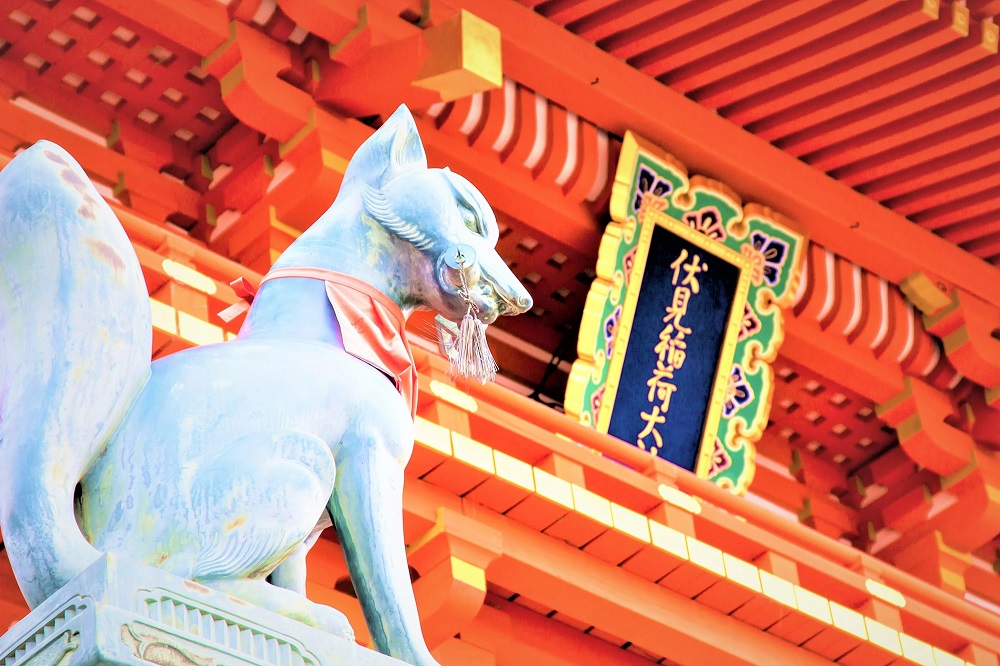
1.Roumon (Tower Gate)
Established in 1589, it is said that Toyotomi Hideyoshi donated this gate to pray for his mother's illness recovery. It is designated as an important cultural property of Japan, with well-preserved Outer Worship Hall, Okumiya, and Byakkosha. In front of the tower gate, a pair of fox statues are placed facing each other like Komainu (guardian dog statues).
2. Main Shrine
The dazzling red main shrine houses five deities that govern good harvests, worshipped in one shrine building. It has been revered since ancient times for blessings of abundant food. The main shrine, which was burnt down during the Onin War, was restored in 1499 and is designated as an important cultural property of Japan. Built during the transitional period from the Muromachi era to the Momoyama era, its luxurious Momoyama-style carvings are worth seeing. The large shrine building, which features a Tang Dynasty-style roof and traditional Japanese cypress bark roofing, is distinctive.
3. Senbon Torii (Thousand Torii Gates)
The myriad of red torii gates is the main attraction of Fushimi Inari Taisha. Walking through these gates in the mountain circuit is a unique experience. The gates, which symbolize a hope and gratitude for wishes to be granted, have been donated by visitors since the Edo period. It is said that there are over 10,000 gates throughout the entire approach. The red color symbolizes bright hope, life, earth, and productive power, and the red used at Fushimi Inari Taisha is also referred to as "Inari-nuri".
4. Okusha Worship Place
Beyond the Senbon Torii is the Okusha Worship Place, the starting point of the "mountain circuit", where you can worship the peaks of Mount Inari where the great Inari deity resides. The circuit, lined with red torii gates, invites visitors to the summit. The total distance of the mountain tour is about 4 km and it takes about 2 hours. The Okusha Worship Place is also famous for the "OmoKaru stone". By lifting the round stone on top while making a wish, you can predict its fulfillment. If the stone is lighter than you expected, your wish will come true, and if it is heavier, it will be harder to fulfill.
5.Kumataka Shrine (New Pond)
The Kumataka Shrine has a shrine building set up with the stonework of the New Pond as the sacred object. It is the deity of lost items, and it is said that if you clap your hands towards this new pond and look in the direction where the echo returns, you can meet a person who is lost.
6. Ganriki Shrine
This shrine houses the deity of eyes and has been said since ancient times to provide benefits such as healing eye diseases and granting foresight. It's popular not only among people wishing for eye health but also among managers and market-related people who value foresight.
7. Yakuryoku Shrine
This shrine, known for its benefits related to medicine and health, houses the Yakuryoku deity. The fox statue of the Yakuryoku deity, which is a rare parent-child fox in Fushimi Inari Taisha, is also revered as a symbol of safe childbirth, prosperity of descendants, and household safety. It is said that if you take medicine with well water from a hand pump on the premises, the medicine will work better and the illness will be cured.
Nearby is the Oseki deity, affectionately called "Oseki-san", who protects thethroat. In the past, Kabuki actors would often visit to pray for their voices to "carry well". Even today, entertainers and others who use their voices in their work visit to pay their respects. There's also a mailbox set up for Oseki-san, allowing those who can't visit in person, like people living far away, to send in postcards for prayers and thanksgiving.
8. Ichinomine (Kamisha Shinseki)
Ichinomine, the peak of Inari Mountain at an altitude of 233m, is affectionately known as Suehiro Daimyojin. It is said that it was given an alias to the great Inari deity and was enshrined as a personal deity in ancient times.
Fushimi Inari Taisha Events
Hatsuuma Festival
When: The day of the first Horse sign in February
The Hatsuuma Festival commemorates the enshrinement of the Great Inari God on Inari Mountain on the day of the first Horse sign in February 711 AD (Wado 4 in the traditional Japanese calendar). The pilgrimage on the day of the first Horse sign, also called "Fuku-mairi," draws many visitors wishing for prosperous business and safety of their household. Worshippers can receive a "sign (gen) of cedar" token, a blessed object which they can purchase. This token is a small cedar twig from Fushimi Inari, a meaningful custom dating back to the Heian period based on the practice of carrying this twig for prosperous business and household safety.
Motomiya Festival
When: First Sunday or holiday after "doyo" (the 18-day period before each season) in July
The Motomiya Festival is a grand celebration where devotees of the Great Inari God from all over the country gather. On the eve of the festival, lights are lit in the stone lanterns and paper lanterns dedicated throughout Inari Mountain, creating a fantastical atmosphere. In addition, the Motomiya Dance is performed in the plaza in front of the Sanshuden Hall, and the shrine precincts are bustling all day.
Hitaki Festival
When: November 8
This festival is held to express gratitude for the autumn harvest and to send off the gods of the grains welcomed in the spring back to the mountains. After the shrine's rituals are finished, hundreds of thousands of Hitaki skewers sent from all over the country are kindled, and all the attendees pray for the elimination of sins and calamities, and the attraction of all kinds of happiness. In the evening, an ancient Kagura dance called the "Hito-nagashi-mai" is performed in front of the main shrine.
Take a break at Fushimi Inari Taisha
Vermilion Cafe
This cafe offers carefully selected, freshly ground coffee. The coffee is specially roasted at a roastery in Kyoto. You can also enjoy homemade sandwiches and brunch menus made with Kyoto ingredients. With terrace seating available, it's not just for coffee, but also a great place for a leisurely meal.
Address: 85 Fukakusa Inarionmaecho, Fushimi Ward, Kyoto
So-Honke Hojyokudo
Located in the Inari Prosperity Association with over 80 years of history, this is the original shop for Inari rice crackers. The shop carefully bakes about 1,000 rice crackers a day, a practice that hasn't changed in over 80 years. The cute "fox rice crackers", shaped like a fox's face, are perfect for souvenirs. The "bell rice cracker", shaped like a bell with a fortune inside, has become a specialty of Fushimi Inari as a way to test your luck after a visit to the shrine.
Address: 27-7 Fukakusa Ichinotsubocho, Fushimi Ward, Kyoto
Inari Tearoom
Located in a newly built rest area called "Tei Cho An" within the grounds of Fushimi Inari Taisha, this is a Japanese tea cafe. Run by "Chun-do Tea Shop", a producer and seller of high-quality Uji matcha tea trusted by Fushimi Inari Taisha and Tofukuji Temple, you can enjoy authentic tea casually. The "Inari Parfait" and "Inari Shaved Ice" topped with a red torii gate are photogenic and sure to make a splash on social media. These are special sweets that can only be eaten here.
Address: 68 Fukakusa Yabunouchicho, Fushimi Ward, Kyoto
*Please note that transportation and facility fees, hours, etc. may change without notice. Please confirm the latest information on the official website as well.
*Thank you for reading the article!
To improve YOKKA's service, we kindly request your participation in a survey below.
YOKKA


